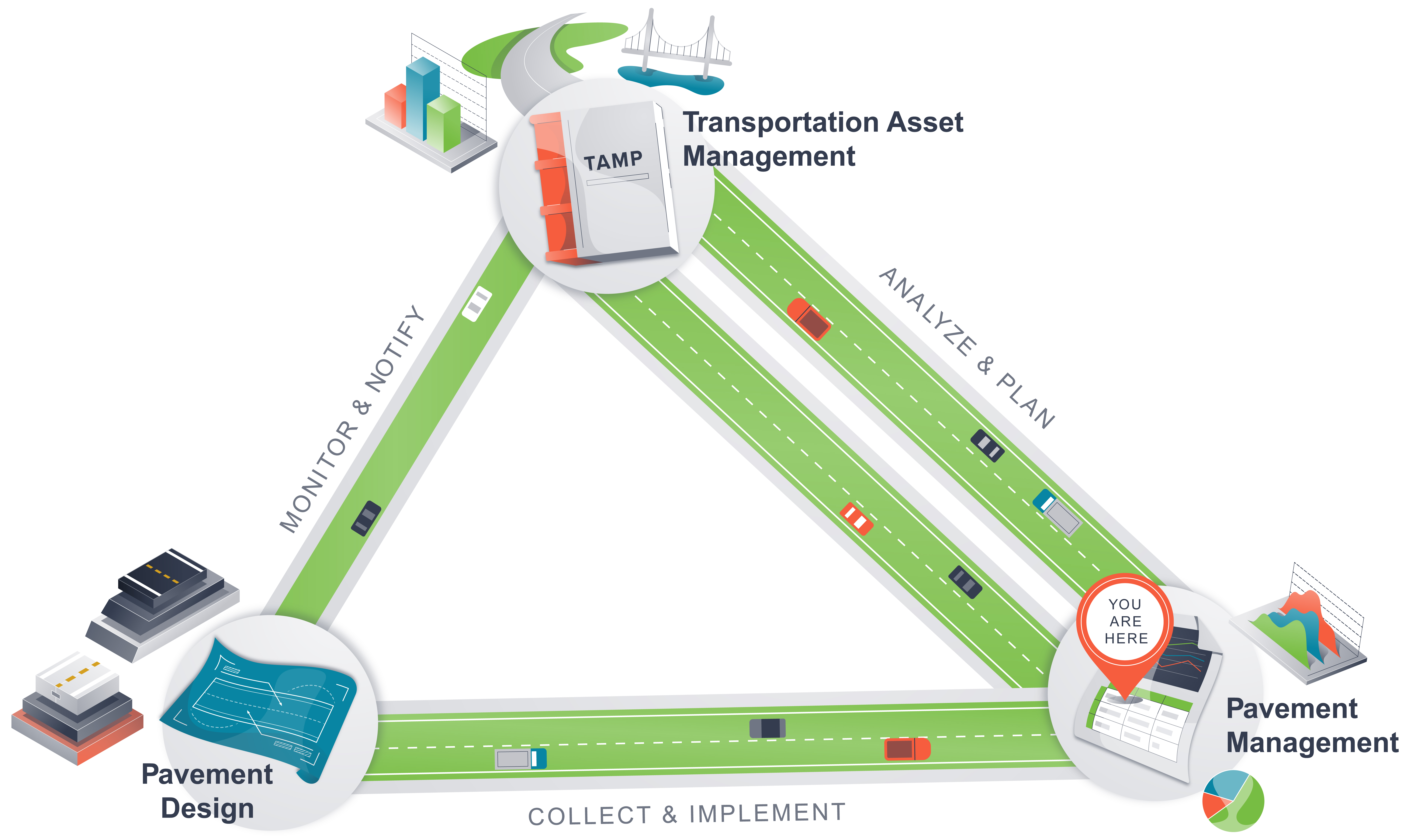Pavement Management

Pavement management is a process that uses data to model pavement behavior to determine efficient and effective long-term strategies for managing the physical condition of a pavement network. Pavement management's principal function is to develop treatment and project recommendations that provide the best pavement condition at the least practical cost over both the short- and long-term:
- In the short term, pavement management informs decision makers on the current state of pavement assets in terms of inventory, location, condition, and remaining service life.
- In the long term, pavement management can provide forecasts of conditions for given financial scenarios. The forecasts help departments of transportation (DOTs) determine the funding level needed to meet a desired network condition at a future time.
Pavement management uses quality data, robust models, and highly qualified staff to analyze different approaches for managing the condition of pavements across a highway network. The analysis results help to inform decision-makers on asset management investment strategies and project selection by:
- Predicting future condition based on various budget scenarios.
- Recommending appropriate treatments and timing.
- Estimating statewide pavement budget needs.
- Developing a Transportation Asset Management Plan (TAMP).
- Developing a Statewide Transportation Improvement Plan (STIP).
- Supporting pavement design.
Pavement management supports the activities listed above through scenario analysis. A scenario analysis compares how different funding levels or treatment strategies can affect pavement network condition over an analysis period. By comparing the forecasted conditions from different scenarios, a DOT can determine the scenario that is preferred or most practical. Scenario analysis may also be called "what if" or "trade-off" analysis. Scenario analyses can be used to determine funding levels needed to maintain a prescribed or desired network condition, to aid in target setting, or to optimize the balance of funding allocated to various work types (e.g., maintenance, preservation, rehabilitation, or reconstruction). Scenario analyses are run beyond a single year to provide decision makers with information on the long-term impacts of each scenario. A typical minimum timeframe for a scenario analysis is 10 years.
A common output from a scenario analysis is a prioritized list of recommended projects. Each recommended project includes a description of the recommended work type, location, and timing. Additional project information such as pretreatment conditions, or the consequences of delaying, accelerating, or modifying the recommendations, may also be provided to further inform decision makers.
New to pavement management or want to learn more? Read the Pavement Management report.

